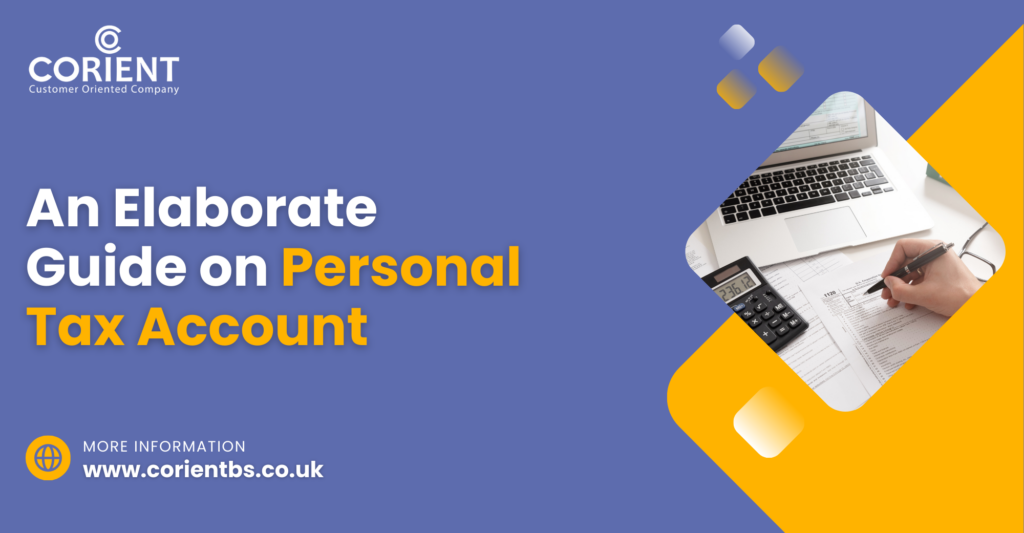
An Elaborate Guide on Personal Tax Account
What is a Personal Tax Account?
HMRC started the personal tax account as an online service to simplify access to information at a single point. It allows users to manage their tax issues without contacting HMRC. Having direct access to the personal tax account will save users time and energy, thus allowing efficient handling of tax matters.
The service was launched by HMRC in 2015, and it has since been a roaring success thanks to the countless hours it has saved for users by bringing everything online and accessible as per user’s requirement. One thing must be noted here there is a difference between HMRC’s personal tax account (PTA) and business tax account (BTA); both allow the management of tax affairs online. The difference is that a personal tax account is designed for individuals, including those not self-employed.
Why to Setup a Personal Tax Account?
HMRC introduced the personal tax account, which features advanced security measures. One of the major benefits of having an operational is that users will get all their tax information on an online portal. This access to information in one place will give the user more financial control.
Personal tax accounts are for individual users and can be opened and operated by them singlehandedly. Still, due to their busy schedules, many people choose to hand over the responsibility of opening and operating it to accounting practices like yours. This is because you have accountants with expertise in the latest accounting standards and regulations. However, you may find yourself in a situation where you are overburdened with multiple personal tax accounts, leaving you with less time for other essential accounting activities. Hence, to reduce your burden, use the outsourced year-end services offered by accounting service providers.
What Task Can You Perform Using a Personal Tax Account?
Since 2015, personal tax accounts have constantly upgraded themselves with various important features, and currently, accounting practices can perform multiple tasks on behalf of their clients. These tasks are as follows:
- Finding of national insurance number
- Filing and monitoring of self-assessment tax returns online
- Checking of income tax estimates, which helps holders in planning their budget
- Checking the state pension track
- Keeping an eye on any tax-related forms sent to HMRC online
- Organise tax credits
- Update and monitor marriage allowance
- Find a lost UTR number; this number is only for self-employed or completing a tax return for other reasons.
- Check work benefits, like medical insurance or company car
- Analyse P800 forms if you have paid too much or too little tax
Remember, these are just some tasks you can complete using, and the list will grow as HMRC pushes for full digitization of the tax system.
How to Set Up a Personal Tax Account?
It may look like a job that will take a few minutes, but in real life, that’s not true. If all information and paperwork are well-organized, setting up a will proceed smoothly. Usually, individuals avoid such work and hand over the responsibility to accounting practices like yours, so the responsibility of opening and getting all the necessary information and records falls on you.
At the start of the process, you must log into the personal tax account getaway and file the required information. The information required to apply includes:
- National insurance number
- Recent payslip
- UK passport or a recent P60
- You’ll need a mobile or landline number for 2-step security verification.
- Email address to attach to your account
Select from the column, i.e., individual, organisation, or agent, to start the registration process. After that, follow the below listed 4 steps:
- Enter the name, email address and password to get a user ID.
- When signing in for the first time, you will need a User ID, password, and a unique 6-digit code. You will receive a code, which you must fill in in the appropriate field for identity confirmation.
- We will construct security questions based on the information from the submitted P60 form, passport, and payslip.
- Your identity will be verified through the provided answers, allowing you to access everything in your client’s.
With this setup, you’ll only need your user ID and password to access next time. Setting up looks simple, but it can get mildly time-consuming if you do not have the relevant information. Also, you will be handling multiple clients’ personal tax accounts, making things more difficult. In such a case, you would prefer to use Corient’s outsourced year-end service. We have experience in handling such tasks and multiple other complex accounting responsibilities. To see how efficiently we handle year-end tasks, check out our blog, 5 Steps to Manage Workflow and Complete Year-End Accounts within 90 Days.
Safety of a Personal Tax Account
Only the person who has access to the User ID and password will have access to the personal tax account. In this case, your client has given the responsibility of handling the account to your accounting practice. It is important to note that HMRC takes security very seriously and has incorporated firewall protection. Professional service providers like Corient, with experienced accountants, offer additional security setups, ensuring worry-free account operations.
Conclusion
The HMRC created personal tax accounts to make life easier for individuals when they want to check their details, but there are still some doubts among users and accounting practices regarding certain operations.
This guide simplifies the importance of the account, the tasks you can perform through it, and how to set it up, resolving any doubts. For support with setting up and managing your clients’ personal tax accounts, use Corient’s services. Our outsourced year-end service manages your client’s personal tax accounts, freeing you to focus on other tasks. For more information or to share your requirements, use our website contact form, and we’ll contact you ASAP.

